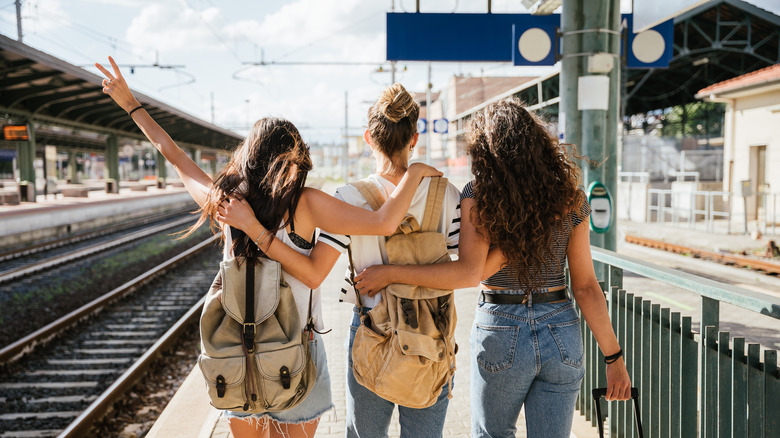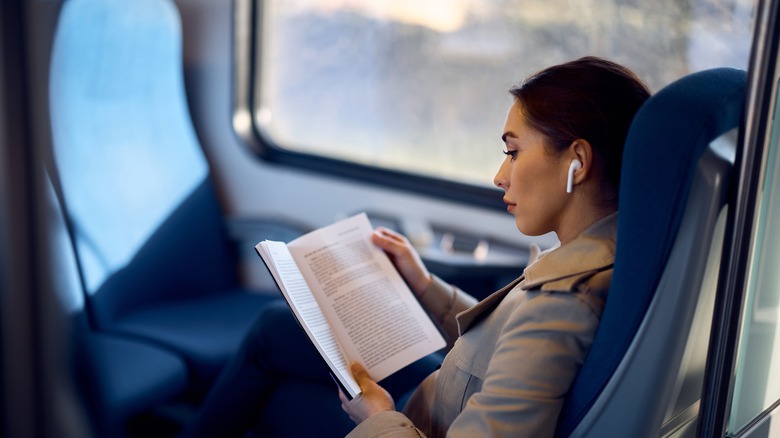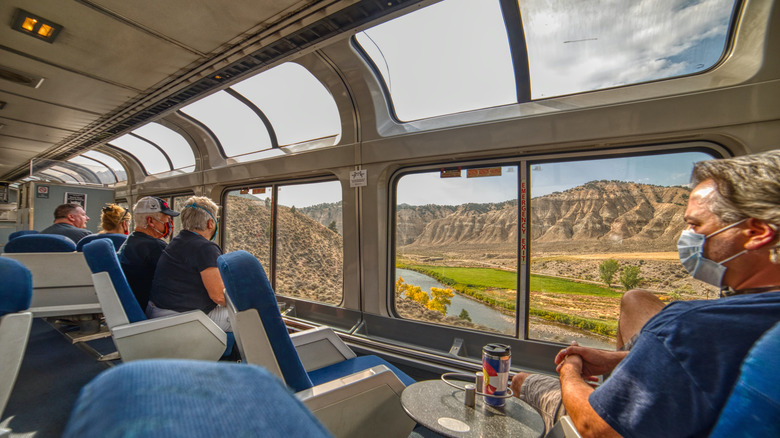Why It's Smart To Familiarize Yourself With The Train Route Before You Travel
Traveling by train is a fantastic way to explore a region, a country, and even entire continents! Trains are more eco-friendly than cars, buses, or planes and more comfortable. Best of all, trains offer travelers the opportunity to see beautiful countryside vistas without ever having to leave the comfort of their seats.
Countries around the world are continuing to expand and improve their rail systems and trains, and some, like Japan's new SC Maglev, can reach speeds over 300 mph. Unfortunately, not all rail systems are as high-tech, fast-paced, and famously punctual as Japan's. Many can be a bit outdated and have odd schedules for different times of year or holidays.
To avoid getting stranded at a train station in the middle of nowhere, you should familiarize yourself with the train route and the current schedule so you can anticipate your stop at least one to two stops ahead of time. Depending on the length of your trip you may also need time to gather your bags and get ready to hop off.
If there is a significant delay or you miss your stop you may also want to be aware of other stops you could get off at to catch a different train back or if it would be possible to get a taxi or bus to your final destination if you are close. Most modern rail companies also have apps you can download that provide maps and train schedules which, depending on the app, are sometimes updated in real-time.
How to prepare for train travel
For popular train routes, you should consider booking your ticket at least a few days in advance. For specialty rails like the IncaRail to Macchu Picchu or longer routes where you may want to book a cabin, you will need to book weeks and even months ahead of time.
Some trains do offer Wi-Fi but the service can be spotty since you are often traveling through rural areas. Due to this, it may be wise to download your favorite music or tv shows or bring a good book you've been meaning to read.
While many rails in Europe with long train routes do have dining cars, the options can be scarce and a tad unhealthy. So for longer trips, you should definitely consider bringing your own food or snacks. It's also a good idea to bring your own food and water to save money since it can be quite expensive.
For overnight trips, you should consider bringing a sleeping mask and earplugs and, if you don't have a sleeping cabin, bring a neck pillow or something to rest your head on so you can get some sleep. If you do have a cabin, consider bringing a lightweight sleeping bag liner to sleep in. You don't want to have to worry if your sheets and pillows have been washed or changed after the last passenger. However, this will entirely depend on the quality of the service and may not be necessary for first-class cabins.
Best places to use train travel
While trains can be amazing, not all of them are easy to use and convenient. However, some stand out among their peers as pioneers of the industry. Here are a few places that are making waves with their incredible train experiences.
Europe has become a global icon for its convenient, affordable, and efficient train travel to nearly all of its major touristic cities and scenic destinations. Popular among recent grads and students taking a gap year before college, non-EU travelers can purchase Eurail passes (EU citizens use Interrail) to travel all over Europe.
Japan is unbeatable when it comes to train travel. Their rail system is famous for its punctuality and its reach. According to the Man in Seat 61, who has written an extensive guide on using the Japanese train system, if there's a destination you need to reach in Japan, there's a train that can take you there.
Though somewhat infamous for its lack of efficient railways, the west coast of the USA is beginning to make inroads on improving its rail transportation options. Amtrak now offers the Coast Starlight, Pacific Surfliner, and California Zephyr train routes which each offers travelers the ability to explore the entire western coastline from Vancouver to San Diego and east toward the Rockies, all the way to Denver, Colorado.


